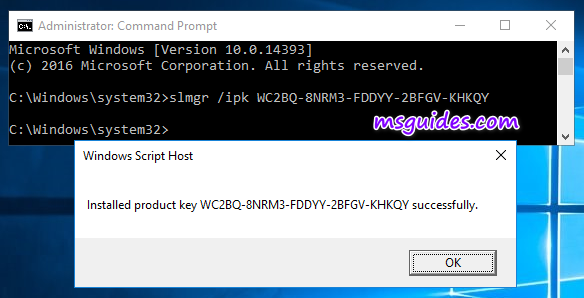

- #Windows 2003 r2 slmgr is not recognized license key#
- #Windows 2003 r2 slmgr is not recognized activation key#
- #Windows 2003 r2 slmgr is not recognized install#
- #Windows 2003 r2 slmgr is not recognized update#
However, going through the KMS Host activation process on an isolated network (not directly connected to the internet) is a time-consuming process.
#Windows 2003 r2 slmgr is not recognized install#
Many organizations choose to install 2 KMS Hosts to ensure license activations continue with the loss of a single server. The KMS Server can be installed on the same server as the DFS root name server and can also be virtualized (which may be ideal since High Availability can be easily enabled using VMWare HA).Ī single KMS Server can handle the load of a large enterprise and it is not likely necessary to install a second (or more) KMS Server. This mitigates additional impact should a DC be taken down or reinstalled. I don’t recommend configuring a Domain Controller as the KMS Server since a DC should only be providing Active Directory services (and DNS in most cases).

A multi-purpose enterprise server is the best candidate for KMS Host since the service is relatively lightweight. Installing the KMS Host (Server) on a machine is simply a product key that gets activated on the computer which initializes the Software Protection Service to listen on port 1688 for license activation requests. Windows 2008 SP2 (and later) now updates the KMS count regardless of machine type, virtual or physical.
#Windows 2003 r2 slmgr is not recognized update#
#Windows 2003 r2 slmgr is not recognized license key#
#Windows 2003 r2 slmgr is not recognized activation key#
Every KMS supported Windows version automatically communicates with the KMS server to activate Windows and manage the activation key (configuring the Windows OS with a KMS key forces it to find a KMS Host and get activation from it). KMS shifts the activation requirement to a single machine which is activated with a special KMS Host (server) key. Starting with Windows Server 2008 & Windows Vista, Microsoft switched to an online activation system where every Windows OS requires activation. The Microsoft Key Management Server (KMS) is part of the Microsoft Volume Activation 2.0 solution managing Windows OS activation keys and performs activation for supported clients automatically.


 0 kommentar(er)
0 kommentar(er)
